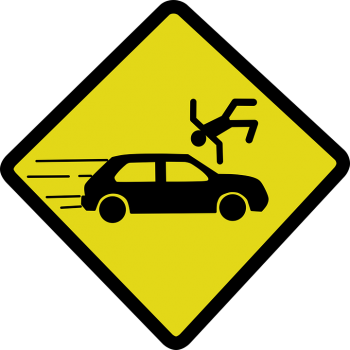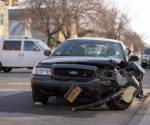How does technology affect road safety?
Technology affects every aspect of our lives, including road safety, where it has had both negative and positive impacts. Though safety advocates expect new technologies to reduce traffic accidents in the future, existing technologies are substantially to blame for an ongoing epidemic of distracted driving, which rivals impairment as a cause of fatal and serious accidents. For personal injury lawyers who work with seriously injured car accident victims, safety technology has tremendous potential to reduce fatalities on our roads. However, action must be taken to address existing safety issues.
Distracted driving
Distracted driving is a scourge on North American roads. Distraction contributed to roughly four-million accidents per year as of 2014 (RCMP) and was a factor in 10 per cent of all fatal crashes as of 2015 (National Highway Safety Administration).
While technology isn’t the sole cause of distraction, it is a major factor. Smartphones are a key part of the problem; statistics suggest that drivers are six times more likely to be involved in an accident while texting than while driving drunk. Many drivers simply can’t resist using their smartphones: according to the American Automobile Association (AAA), 35 per cent of teens admitted to texting and driving despite 94 per cent acknowledging its danger.
In-car entertainment and navigation systems are also known to contribute to distraction behind the wheel.
Automated safety features
On the opposite end of the safety spectrum are automated functions like emergency braking and blind spot detection. These features are designed to compensate for human error, which is involved in the overwhelming majority of motor vehicle accidents. Their successes contribute to the popular narrative that fully automated vehicles will lead to vastly safer roads.
Unfortunately, some safety experts believe automated safety features promote unsafe driving habits. Vehicles that prevent speeding or switching lanes in dangerous situations, the thinking goes, allow drivers to be less attentive and more likely to engage in dangerous behaviours like texting and driving.
Autonomous vehicles
Otherwise known as driverless cars, fully autonomous vehicles take passengers or non-human cargo from point A to point B without human assistance. That might sound like something from a sci-fi movie, but autonomous vehicles are already being tested in tech-friendly cities like San Francisco and Toronto.
From traditional automotive manufacturers like Audi and Nissan to tech giants like Uber and Google, a broad range of companies is eager to stake their claim to a slice of the autonomous vehicle market. It’s not difficult to see why: a world without human driving errors would be safer and more efficient; it would ease strain on hospitals, emergency responders, and personal injury lawyers; and it may even reduce stress associated with commuting.
However, the process of introducing autonomous vehicles to public roads will be messy. Autonomous vehicles cannot communicate with human drivers like they can with other high-tech vehicles, and they may not be able to predict the actions of vulnerable road users like cyclists and pedestrians. The future of autonomous vehicles is bright; the present is decidedly less so.
Out-of-car technology
Technology outside of vehicles can impact road safety just as effectively as in-car devices. In Nevada, several public safety agencies partnered with an Israeli artificial intelligence (AI) startup to reduce accidents along a stretch of highway near Las Vegas. The technology collected in-car information and public traffic data to predict road conditions, which it then used to reduce congestion and alert authorities to high-risk areas.
The pilot produced positive results. Collisions fell during the project, as did the number of drivers travelling above the speed limit. Will we see similar measures come into effect elsewhere in the world?
A safer future
Road safety is a global concern. Different jurisdictions around the world are experimenting with innovative new solutions to the issue of traffic deaths and serious injuries. Fully autonomous vehicles may be our best hope of eliminating road safety concerns, but we’re still many years away from seeing them in common use. In the meantime, governmental bodies, law enforcement groups, personal injury lawyers, and other stakeholders must work together to fight distracted driving and improve safety for all road users.
Author: Clark Kingsbury
















